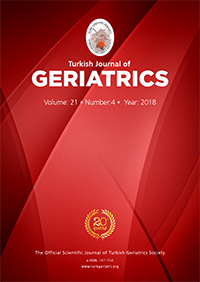2Hacettepe University, Faculty of Medicine, Department of Biostatistics, Ankara, Turkey
3Ankara Yildirim Beyazit University, Physiotherapy and Rehabilitation, Ankara, Turkey DOI : 10.31086/tjgeri.2018.68 Introduction: The aim of this study was to develop the Physical Activity Barriers Scale for the Elderly.
Materials and Method: We developed the Physical Activity Barriers Scale for the Elderly. Fifteen elderly individuals participated in pilot testing to determine the intelligibility of the remaining 30 items after content validity assessment. After confirming the appropriateness of the scale, we administered it to 214 individuals aged >65 years (mean age: 73.9Âḟ7.7 years). We applied the scale again 3-7 days later to determine test?retest reliability using the correlation coefficient. Exploratory and confirmatory factor analysis was used to determine the factor structure. Internal consistency was determined with Cronbach"s alpha. The correlation with the International Physical Activity Questionnaire and the Nottingham Health Profile was assessed for construct validity.
Conclusion: The Physical Activity Barriers Scale for the Elderly is a valid and reliable measurement that can be used to determine the factors that prevent seniors from engaging in physical activity. With this scale, physical activity barriers can be identified, and arrangements can be made to help improve the level of physical activity among elderly individuals.

